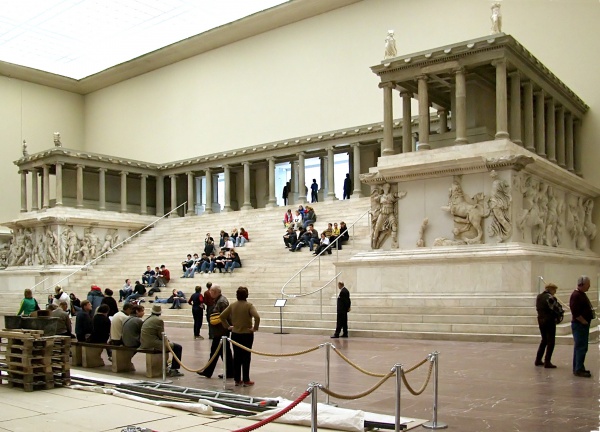Facts About Pergamon Altar
The Pergamon Altar, an extraordinary example of ancient architecture, was constructed under King Eumenes II in the 2nd century BC in Pergamon, an ancient Greek city in Asia Minor. Spanning an impressive 35.64 meters in width and 33.4 meters in depth, it features intricate friezes in high relief that depict the epic Gigantomachy battle and scenes from the life of Telephus.
The story of its discovery and preservation is equally captivating. In 1878, German engineer Carl Humann initiated excavations to preserve the altar’s friezes. This effort ultimately led to the establishment of the Pergamon Museum in Berlin, where these artifacts are now held.
Notably, the Pergamon Altar is not a temple in its own right but was most likely part of a larger temple complex, possibly dedicated to Zeus and Athena. Its use diminished in Late Antiquity, and by the 7th century, it was partially destroyed during fortifications against Arab invasions.
The Gigantomachy frieze is particularly remarkable, illustrating the battle between the Olympian gods and the Giants. This artwork has influenced many subsequent classical works, including the famous Laocoön Group. Meanwhile, the Telephus frieze narrates the story of Telephus with innovative spatial compositions that showcase the exceptional artistry of the time.
The altar’s construction and design, including the application of the golden ratio, underscore the meticulous planning and skill of its creators. Over the years, the altar has sparked various reactions. Its reconstruction in the Pergamon Museum has occasionally been a subject of controversy, serving as a backdrop for events like Olympic bids and even influencing Nazi architecture.
For those interested in exploring the Pergamon Altar’s rich history and significance further, numerous resources and publications are available to delve into its construction, design, and enduring impact on art history.

 Iraq
Iraq